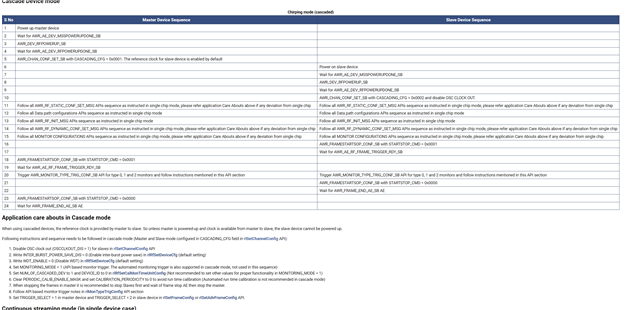Other Parts Discussed in Thread: DCA1000EVM, , TIDA-020047
Hello,
we are trying to set awr2243 chip on dca1000evm board to master mode and we want to enable the FMCW_SYNCOUT and FMCW_CLKOUT pins to read the 20 GHz LO signal.
We are using mmwavelink to control the device and to set it to master mode we changed the parameter "cascading" in the mmwaveconfig.txt file from 0 to 1. However we are not able to read the signal.
Are we missing something? Or is there something else that we should try?
Thank you


